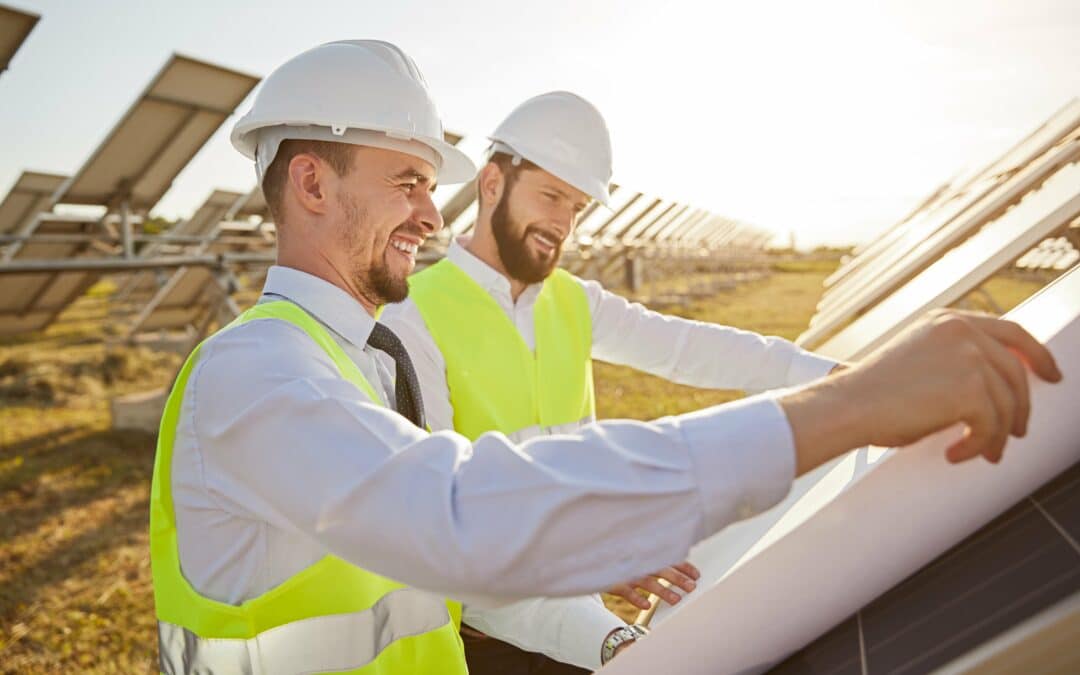With environmental research, the climate crisis and the Glasgow Climate Pact pointing towards the need to adopt sustainable, environmentally conscious practices, even the construction industry must follow suit.
Green building practices have been in effect for quite some time, but there are still several environmentally conscious construction site initiatives that builders and developers can apply right away. Now that construction business executives are seeing the long-term benefits of implementing sustainable building solutions, the industry is continuing to shift its focus to eco-friendly practices.
Moreover, eco-friendly homes and amenities have become more desirable among the younger generation of would-be homeowners.
If you’re looking to implement eco-conscious construction practices and make your construction sites eco-friendly, here are some ideas.
1. Work on reducing waste generated during demolition.
One of the fastest methods for an eco-friendly construction site is minimising demolition waste material.
Although it may sound ironic, demolition plays a significant role in the construction sector. This is because some property development projects are constructed on land occupied by an older structure.
Investors may also decide to remodel a building they have purchased. Such a project will frequently involve demolishing a part of the existing structure to make way for their planned development project.
To reduce waste, you may reuse construction materials like steel, concrete, and other demolition by-products rather than throwing them away in landfills. In doing so, you can lessen the environmental impact of your project, earn money, and maximise the use of specialist equipment like rubbish cages.
In order to reduce expenses and make the construction process even more sustainable, it’s also important to reuse, recycle, and repurpose whenever possible. Items you might consider include carpets, flooring, furniture and ceiling or insulation materials.
View our rubbish cage to dispose of rubbish effectively and efficiently on your next construction project.
2. Plan for the implementation of eco-friendly construction practices.
A lot of investors and end-users (like homebuyers and commercial property tenants) prefer environmentally friendly residential and commercial structures that were designed to be eco-friendly from the ground up.
Governments are also setting eco-friendlier and more sustainable building standards and regulations, giving construction companies even more incentive to start using eco-friendly materials on every project. While making these adjustments over a short period may not be so easy, it is certainly feasible for the long term.
For example, precast concrete, reclaimed wood and metal, cork and bamboo, and sheep’s hide can be used for insulation purposes. Using these and other sustainable resources will undoubtedly appeal to investors today and contribute to a positive ROI for all stakeholders.
Construction companies can also use sediment control cloths or silt fences as part of their sediment control plan to keep soil, sand, and other debris from contaminating waterways.
Additionally, there are a ton of materials that can be recycled and used in eco-friendly house construction projects. For instance, plastic and composite timber can be used as landscape edging due to their longevity. Similarly, shattered concrete can be used as attractive paving for walls and walkways.
Patios, decking, and walks are excellent places to reuse materials. These are also where builders can apply their creativity by making interesting, one-of-a-kind paving designs out of scraps.
Growth-oriented construction companies typically find it easier to adopt environmentally friendly building materials and processes. In doing so, they not only save money but also help protect the environment and provide their customers with safer and healthier spaces.
3. Use locally sourced materials.
Sometimes, certain construction materials must be carried across large distances, requiring a lot of energy. This is why utilising locally sourced resources is a priority in green building.
Doing so improves the efficiency of the construction process and lowers the builder’s and owner’s carbon footprint. Additionally, by using resources within the same locality as the project, construction enterprises can aid in the development of local or regional industries.
4. Harness each land’s total potential.
Using sustainable building materials is only one aspect of eco-friendly construction; it’s also important to maximise the environmental potential of the construction site.
It’s important to remember that prospective tenants and buyers will examine the condition of the land as part of their property selection criteria.
This is why it’s crucial to prevent land degradation by using construction techniques that’ll work to preserve or enhance the landscape and won’t harm the environment.
Additionally, another way to appeal to this generation of eco-aware property investors, it is crucial to incorporate green spaces and multipurpose rooms into the design of the property.
You may also like to consider using eco-friendly construction materials such as composite cladding, recycled steel, rammed earth, natural stone, green walls and roof, mud brick, just to name a few.
5. Invest in or use clean energy sources.
Solar energy investments offer a long-term, sustainable solution to rising energy expenses. Solar power not only minimises your dependency on the grid and eases the burden on electricity providers, but it will also save you money in the long run.
Roofs can be used as generators powered by solar energy to help maintain the flow of electricity and power. A step further would be to use solar-powered photovoltaic windows to create window panels with adjustable transparency and temperature regulation features.
Wind power is an additional source of clean and renewable energy. Any building’s energy needs can be satisfied with turbine farms of any size.
These include rooftop wind turbines with a vertical axis and helical blades that can cut electricity consumption.
Wind turbines can help improve the quality of the air within a building while saving money on utility costs. They also require very little maintenance after installation.
Eco-friendly building for a better future
Green building solutions are a necessity for the future of our planet. The era of green building practices is now.
Forward-thinking, innovative construction companies agree that it’s essential to use contemporary green technology and implement sustainable building practices. Doing so will not only help mitigate the adverse effects of conventional construction processes on the environment but will also result in financial savings.
By applying the tips shared here, you can do your part by drastically reducing your carbon footprint whilst delivering sustainable construction projects to your clientele.
Frequently asked questions
What is environmentally friendly construction?
Eco-friendly building practices and materials have a low environmental impact. To reduce the carbon footprint of exporting raw materials, these prioritise the use of local materials. Any type of project can be built using eco-friendly methods, including the construction of buildings, highways, and parking lots.
What roles do buildings and construction work play in climate change?
Massive amounts of energy are consumed to heat and power buildings. Most of this energy comes from burning fossil fuels like coal, oil, and natural gas. These produce a large amount of carbon dioxide (CO2), which is the most pervasive greenhouse gas.
Other ways that buildings contribute to the release of greenhouse gases include construction and demolition waste that breaks down in landfills and releases methane, as well as the extraction and manufacture of building materials.
How are buildings in Australia certified as green?
Australia uses a number of government and third-party rating systems to evaluate and rank green buildings. For example, green Star is a green construction standard created and used by the Green Building Council of Australia (GBCA).
What are sustainable materials?
In general, sustainable materials are those that have a low environmental impact throughout their life cycle – from extraction and production through to use and disposal.
Sustainable materials can be made from renewable or recycled resources, and they can be designed to be reused or recycled at the end of their life. Sustainable materials can also be natural materials that are sustainably managed.
What are 4 sustainable construction practices?
4 sustainable construction practices include:
- Using sustainable construction materials
- Incorporating energy efficiency measures
- Implementing water conservation strategies
- Adopting waste reduction initiatives
What are sustainable construction technologies?
Sustainable construction technologies that are shaping our future include:
- Green building materials
- Recycled building materials
- Solar power
- Wind power
- Geothermal energy
- Hydro power
- Wave and tidal energy
- Fuel cells
- Micro-hydro systems



Recent Comments